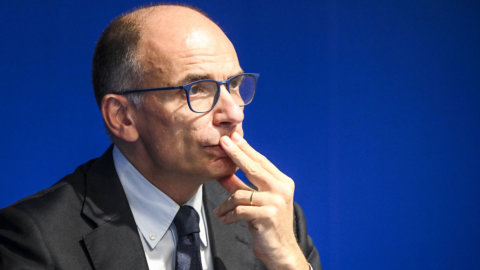It was 2001, the USA was at risk of recession and the result of the deregulation process started at the end of the 90s had led to risky liberalizations and so the State of California fell victim to the risk of a blackout and had to take a quick step back due to of the manipulation of energy prices on the Power Exchange resulting from the mess between distributors and producers. This happened again in 2006 and 2008.
The lesson is not served and requires us to carefully reflect on all those markets where there is a physical asset and where there are strong oligopolies or monopolies that hold back the transparency of exchanges, as in the case of the diamond market for example. And, just as the low interest rates and the volatility which accentuated in the first quarter of this year push investors either to exponentially increase the risks or to put themselves on the defensive definitively, one wonders about the value of multi-asset strategies therefore linked to commodities and in gold detail. With a +16,4% in the first quarter, marking the best performance of the last twenty years, investors would seem to be waiting for any slightest weakness to enter, but the doubt that the trend has already deflated is more palpable after the happy meeting of the IMF and the G20 with yet another review of global growth.
One year after the launch of the new fixing methodologies on precious metals, the class action bomb exploded on silver in Canada, and Deutsche Bank admitted manipulation of gold in the period from 1999 to 2014 with the usual method of fixing, already used in the case of the manipulation of the Libor and the Euribor in the scandal that broke out in the summer of 2012. Taking a step back to the beginning of 2014, Barclays and DB leave the Panel of Banks in charge of fixing the fixing of the gold and the silver. A club for the well-known few that has seen itself thus exposed to the inevitable reaction of the World Gold Council (WGC) which has since initiated the hoped-for gold reform also concerning the regulation of futures and options. And that has led to an electronic and more guaranteed fixing according to the WGC inaugurated last year, but which in part sees the usual suspects.
But, no more delays, and according to the WGC: "History shows that, in a scenario of low interest rates, gold yields tend to double their long-term average". Doubts remain after this latest news and if US rates don't rise so quickly against an increasingly deflationary background, technically the 1150 usd/oz quotation still remains an interesting entry level after the recent retracement.
However, it is necessary to carefully observe some structural elements of the gold market: for example what is happening in India, the largest consumer of gold in the world, where gold imports drop by 41% in April, obviously helping Premier Modi's efforts in containment of the current account deficit and after the introduction of a 1% tax on gold jewellery.
The drop was not only caused by the strike underway in the sector since early March following the new tax, but above all by the huge level of reserves on which traders now draw by launching a discount campaign during the famous Hindu holiday called Akshay Tritiya . So in March imports had already collapsed to 18 tons from 125 last year. And the strike now suspended for the awaited annual appointment will resume on April 26th.
But that's not all, the latest news comes from China: in the run-up to its entry into the IMF basket in October, rumors have spread of maneuvers that would help the yuan, already dominant in global trade, to the detriment of the US dollar. After all, China is the country that uses the US dollar most in trade after the US itself and could be tempted to change the terms of convertibility that now binds it to the US dollar, yen, Australian and New Zealand dollars by linking it to gold and therefore, in an uncertain currency landscape, making it more attractive than the king dollar.
In fact, on April 19, Reuters learned that Chinese banks, alongside mining corporates and the biggest names in world jewelry, will be among the 18 members who will participate in the launch of the new gold benchmark denominated in yuan. London is warned: after so many scandals, the gold axis moves to China, a first step for a yuan ready to play a leading role in international reserves.
In short, among the doubts that still remain linked to the opportunistic use of some platforms and Fixings, and having said that the echo of the Volkswagen issue that went in parallel with the US class action in January against the trading execution platform Autobahn of DB, even the systemic variables for gold must be taken into due consideration in the Trading activity and even more so by making long-term investment choices by paying close attention to how these factors will inevitably condition a defensive trend that is too exposed to certain variables global.




